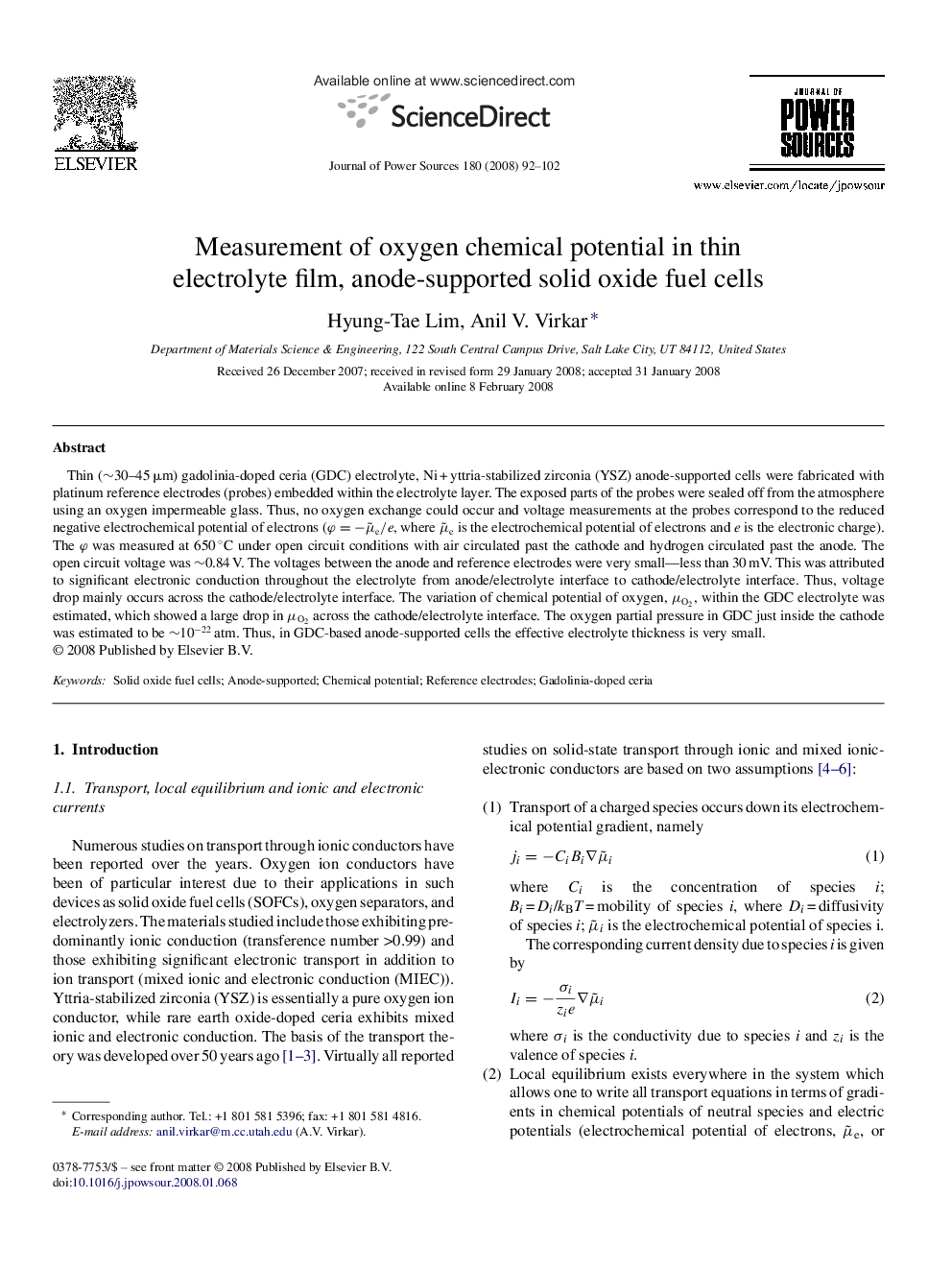| Article ID | Journal | Published Year | Pages | File Type |
|---|---|---|---|---|
| 1290548 | Journal of Power Sources | 2008 | 11 Pages |
Thin (∼30–45 μm) gadolinia-doped ceria (GDC) electrolyte, Ni + yttria-stabilized zirconia (YSZ) anode-supported cells were fabricated with platinum reference electrodes (probes) embedded within the electrolyte layer. The exposed parts of the probes were sealed off from the atmosphere using an oxygen impermeable glass. Thus, no oxygen exchange could occur and voltage measurements at the probes correspond to the reduced negative electrochemical potential of electrons (φ=−μ˜e/e, where μ˜e is the electrochemical potential of electrons and e is the electronic charge). The φ was measured at 650 °C under open circuit conditions with air circulated past the cathode and hydrogen circulated past the anode. The open circuit voltage was ∼0.84 V. The voltages between the anode and reference electrodes were very small—less than 30 mV. This was attributed to significant electronic conduction throughout the electrolyte from anode/electrolyte interface to cathode/electrolyte interface. Thus, voltage drop mainly occurs across the cathode/electrolyte interface. The variation of chemical potential of oxygen, μO2μO2, within the GDC electrolyte was estimated, which showed a large drop in μO2μO2 across the cathode/electrolyte interface. The oxygen partial pressure in GDC just inside the cathode was estimated to be ∼10−22 atm. Thus, in GDC-based anode-supported cells the effective electrolyte thickness is very small.
